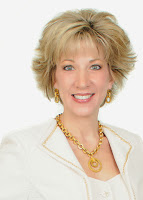The best way to learn about any subject is to study the leaders of that particular field. For this week’s post, we had the pleasure of speaking with Laura Stack about different ways to increase productivity in the workplace.
Laura Stack is America’s premier expert in Productivity. For over 20 years, her seminars and speeches have helped leaders improve output, execute efficiently, and save time at work. Her company, The Productivity Pro, Inc., provides workshops around the globe on productivity, potential, and performance. She’s the bestselling author of five books from major publishers, most recently. To invite Laura to speak at your next event or sign up for her free monthly newsletter, visit www.TheProductivityPro.com.
1) What inspired you to become a productivity expert? What helped you make the jump and apply the principles in your daily life?
My father is a veteran, a retired colonel in the United States Air Force, so I moved around quite a bit. Today, when people ask me about my childhood “home,” I think about the pink bedroom in Colorado, the yellow kitchen in Ohio, the whitewashed porch in Texas. I’ve moved nearly 30 times in all and hated every single one of them. So I survived by taking control of what I could. I became a master at packing and organizing.
My friends used to laugh at my perfectly clean bedroom, my compulsive list making, and my overwhelming urge to organize. But these experiences helped me with my life plan. The upheaval of my childhood taught me how to create order out of chaos, which laid the foundation for my work today. My background helped me build the systems I use today as The Productivity Pro, teaching professionals how to spend their time moving closer to their goals in work and life.
At my core, I don’t think of myself as an author first. What I really love doing is getting up on a stage and speaking. Being a professional speaker really floats my boat. I speak at professional conferences, meetings, retreats, training events…actually anywhere someone will hire me to talk. I knew that books would be the best vehicle to get my message into the hands of a mass market, prompting them to pick up the phone or email me with an inquiry to speak.
2) We encounter people that know they could be making better use of their time, but ironically never make the time to actually improve on their unproductive habits. How do you typically get those people to start finding the time to make positive changes?
Start small. Think about how productive you are right before you go on vacation. Everything inside of you supports your desire to leave! The unimportant things magically disappear, and you focus on higher-value activities. Similarly, you can pick a single day, perhaps Thursdays, to be “the” day you leave work on time. To support this decision, you will automatically begin to be more productive on Thursdays and work your day more carefully. Even though you work a normal workday on Thursday, you don’t get any less work done.
After you sense what it’s like to have Thursday nights to yourself, you benefit from a system of self-reinforcement, because you enjoy the rewards you created. Then add another day, like Monday, and do the same thing. Keep working on productivity skills and adding more days, until you’re working reasonable hours again and accomplishing even greater results.
3) What is the most common problem you typically hear in regards to poor meetings? How do you solve it?
The biggest problem people complain about is an unclear agenda.
People need to know why they’re meeting and what you expect to accomplish as a result.
Distribute the agenda and associated materials at least 24 hours in advance, preferably 72. At the end of the meeting, have someone distribute the minutes, which should list what decisions were made, who is responsible for what, by when. Rather than invite too many people, send the minutes to those who might be interested but don’t have an integral part in the meeting.
4) As technology continues to play a bigger role in the business world, do you think more companies will look to software to help solve their productivity problems?
Most organizations don’t have a clear methodology to accomplish the distribution of agendas, minutes, decisions, and action items. Most use a haphazard approach, and meetings succeed or fail based upon the organizational skill of the leader. Cloud-based technologies and apps like Less meeting allow for standardization, consistency, and follow-through on promises made. Less Meeting becomes the collective “memory” to allow members to refer back to what happened and what actions items are required.
5) What is one productivity tip you wish you knew 20 years ago?
I wish I would have hired people sooner to help me. The more money I’ve spent on partnerships, outsourcing, agents, and employees, the more successful I’ve been in business. I should have looked to other experts sooner to “fill in the blanks,” rather than doing everything myself. Identify people who can do what you can’t, pay them to do it, and get out of the way.
6) In your new book ‘Execution IS the Strategy’, you emphasize empowering employees to achieve success; in what ways could we start empowering our employees tomorrow?
Rather than simply issuing orders and expecting team members to follow them blindly, encourage them to do what they already know they need to do. Accept the fact that, despite your leadership role, they’re the ones at the sharp end of the stick. Modern leadership is more of a partnership than ever before.
Work may not be a democracy, but it’s definitely not a dictatorship. Circumstances change too fast. So be the change leader when you must and the visionary when you can. Give your team all the facts they need to advance, and allow them a free hand to shift course and goals quickly. Let them tell you the best way to achieve your priorities and get out of their way. Maintain the conversation as a positive feedback loop. That way, they know that what works best is constantly added to and strengthens the workflow system.
7) We find a lot of individuals who try to implement meeting best practices, but can’t seem to get their team members on board. How do you recommend getting coworkers to participate?
You should create a joint meeting code of conduct. The next time you attend a staff or committee meeting, request the opportunity to lead an exercise aimed at making meetings more productive and less draining.
Tell the group you would like to discuss some guidelines and protocols about meetings. Standing in front of a flip chart, ask the group, “If you were king or queen of the world, what rules would you make about meetings, to make them as productive as possible? What makes you crazy about our meetings? How do we waste time?” and list the statements people make. Type these up, title it “Code of Conduct,” put it on a piece of 8 ½ x 11 paper, and take it to a print shop to be blown up into a poster-size piece of paper. Frame it and hang it in the meeting rooms to remind people about proper behavior in a meeting.
Some sample guidelines include:
- If the leader or key decision maker no-shows, attendees may leave after 10 minutes.
- Use a timekeeper (appointed by the leader) to keep the meeting on target and follow the agenda.
- Appoint a scribe for the meeting. When something comes up that’s not on the agenda, the scribe records it on the flipchart. If there is time at the end of the meeting, those items can be addressed. If time runs out, they roll over to the next meeting agenda.
- Action items are recorded as “who/what/when” on a flipchart. The scribe types these up after the meeting and distributes them within 48 hours.
- Meetings will start and stop on time, unless all in attendance agree to extend the time.
- Try to finish early if possible; don’t stretch the meeting.
- Attendees may get up and leave at the stated end time.
- Eliminate any discussion that involves only two people.
- Don’t stop meetings to bring latecomers up to date.
What guidelines would you add to the list?





